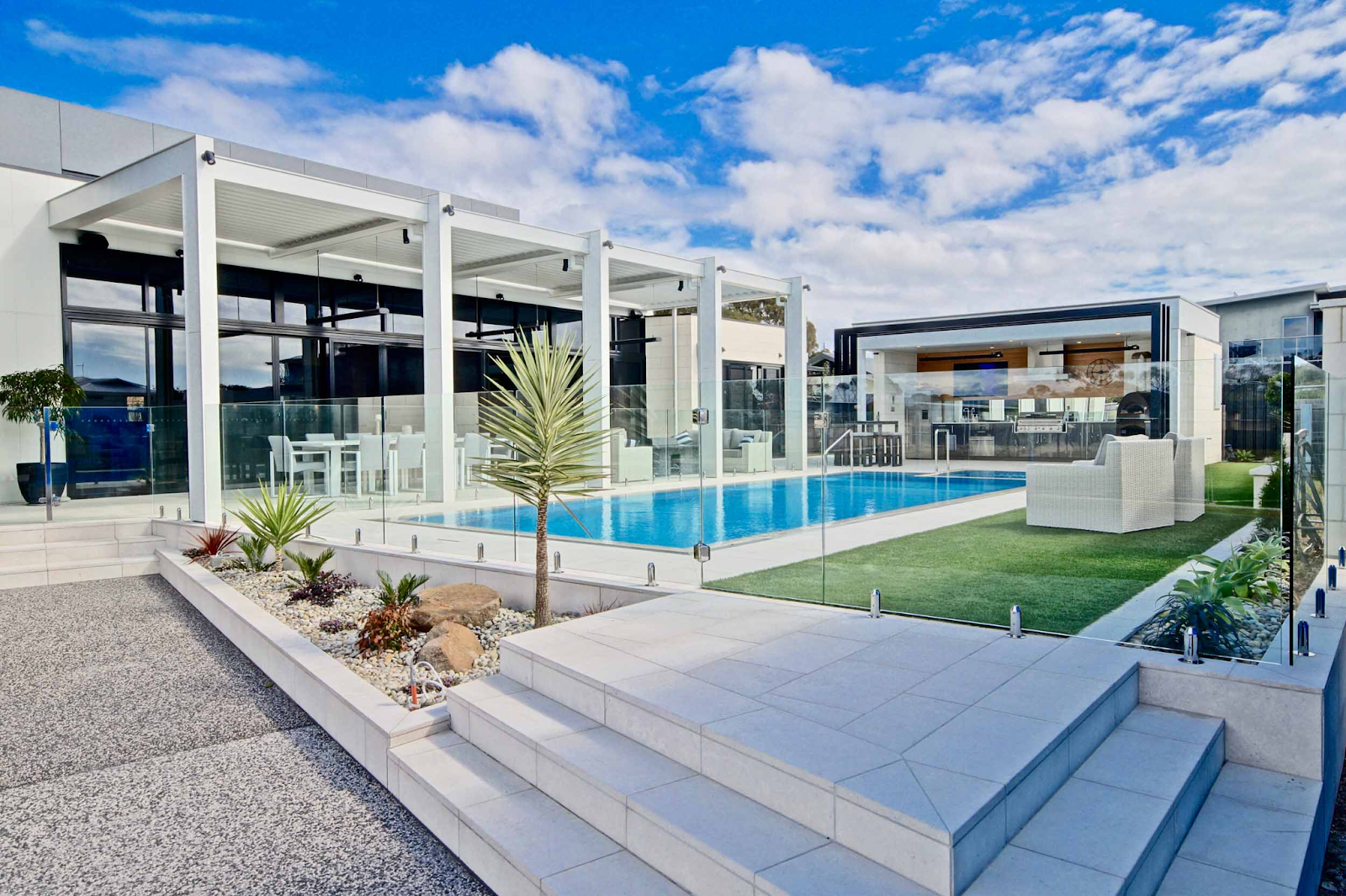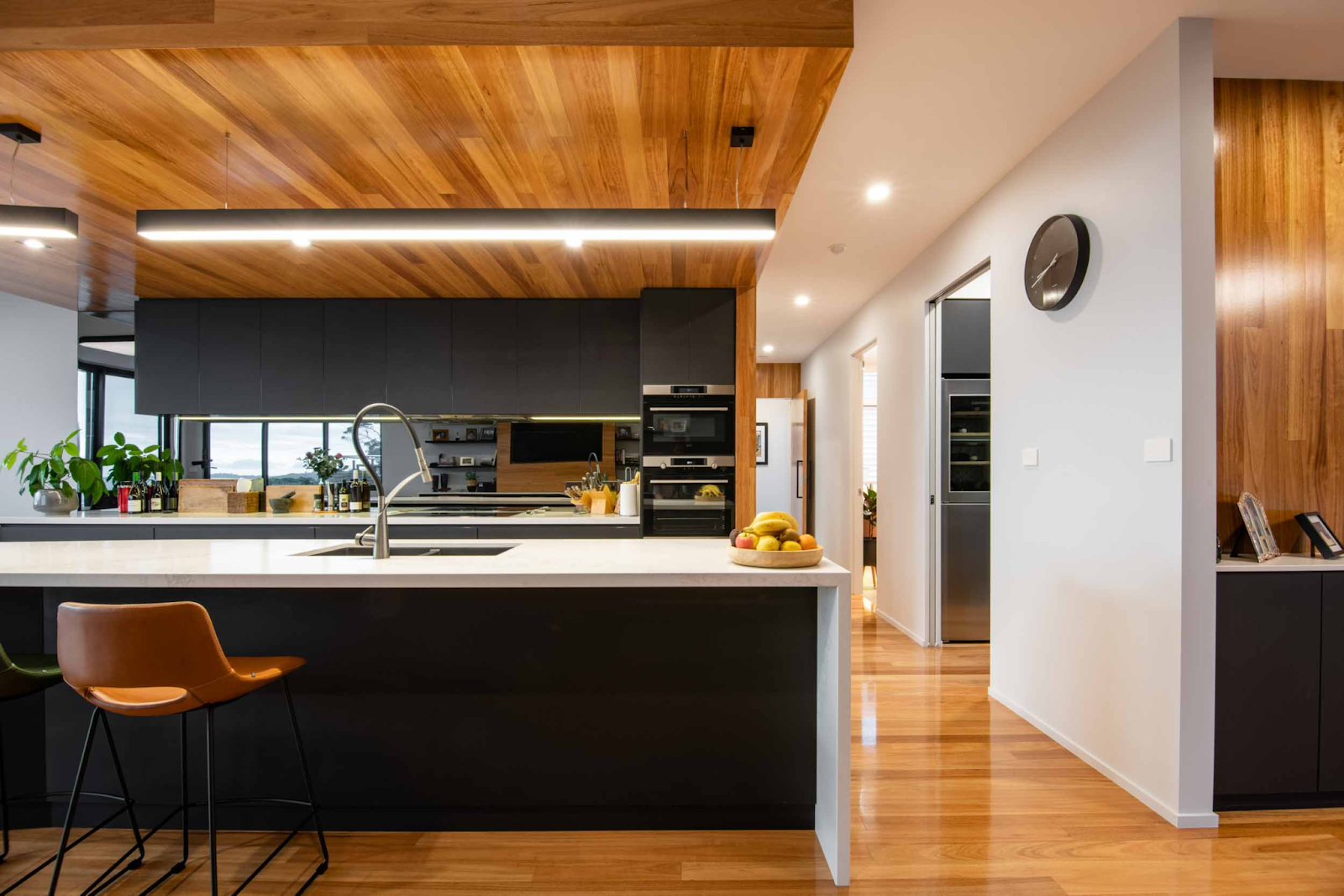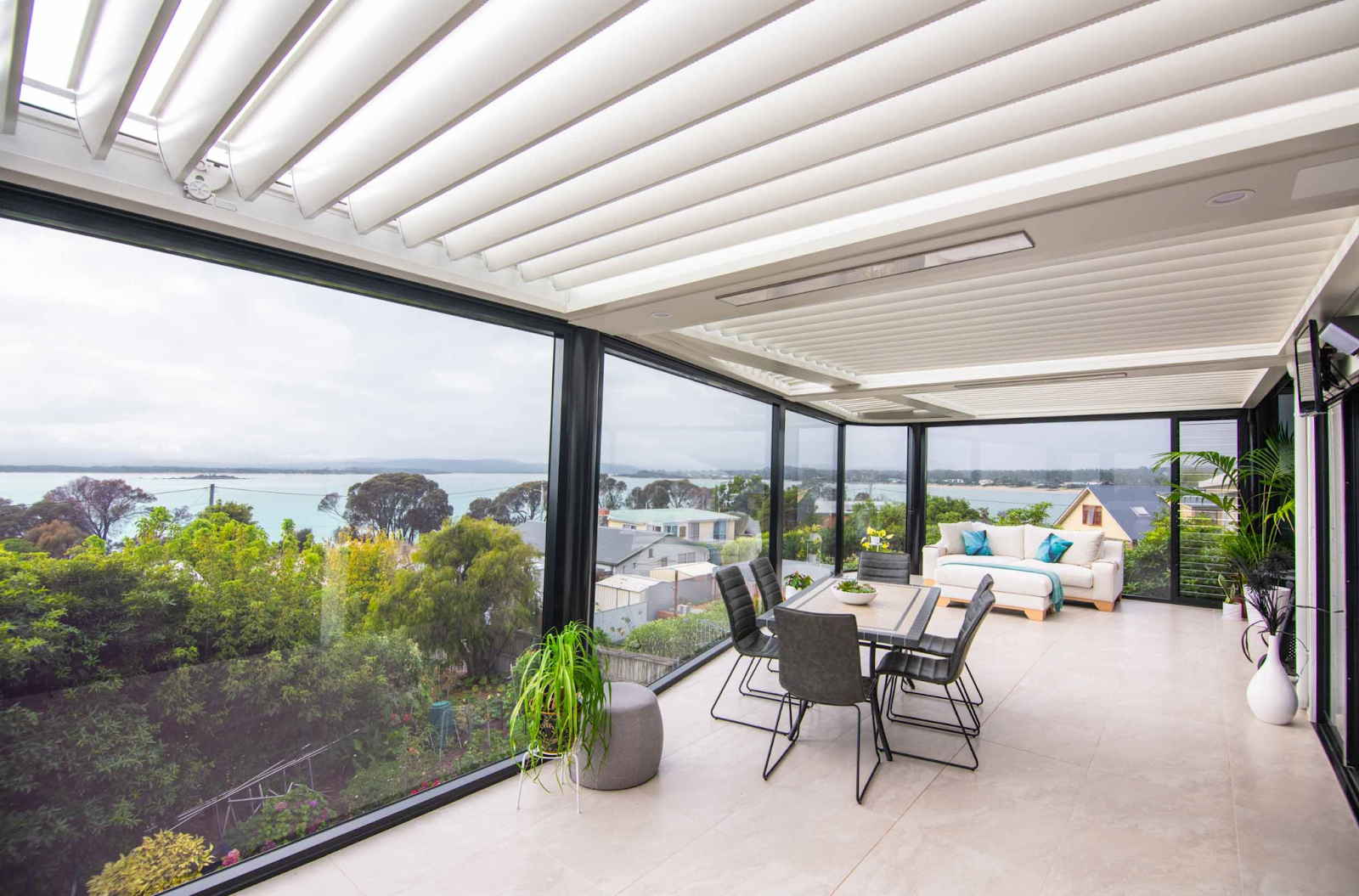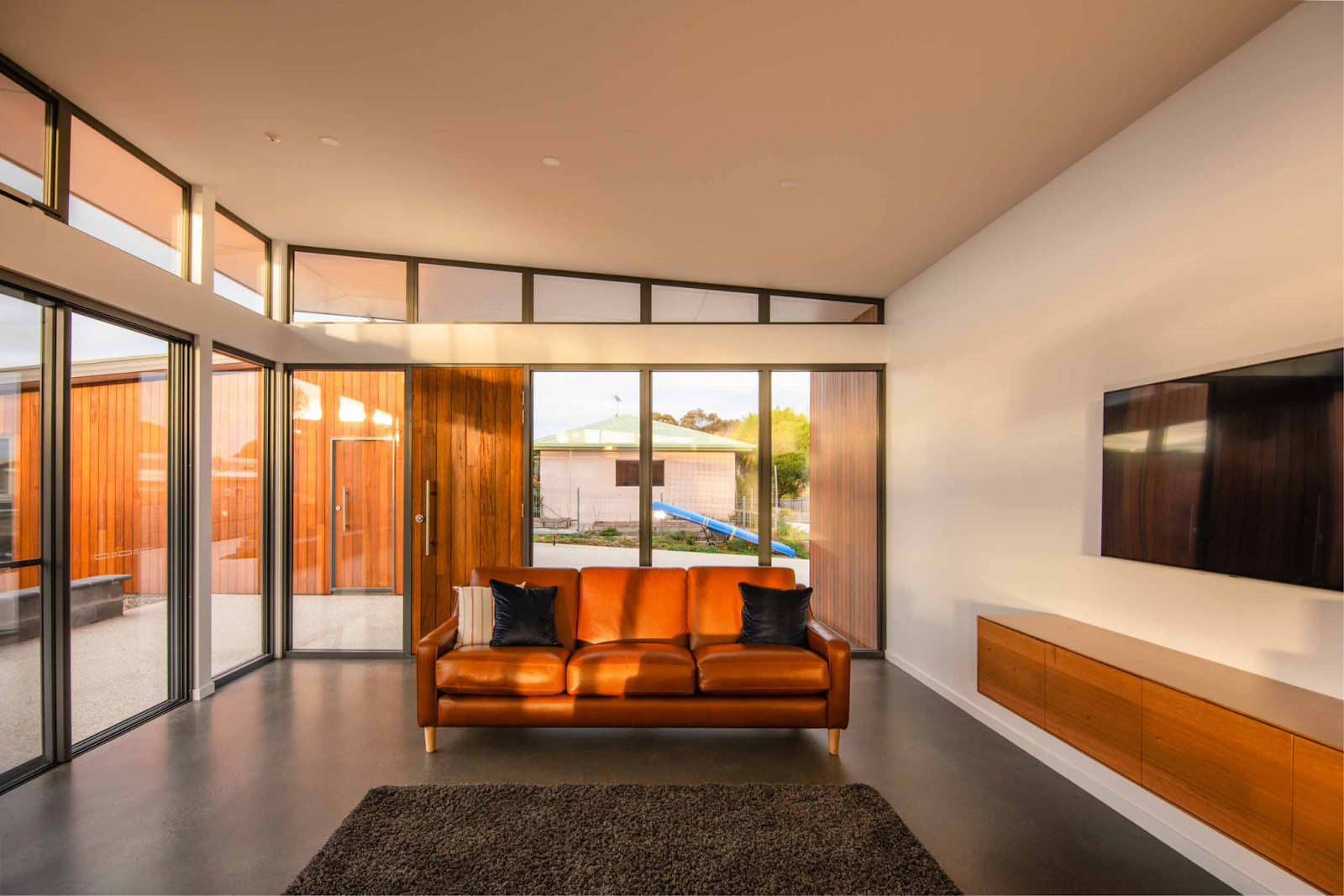
The Art of Modern Coastal Architecture
Life’s a Beach: Architecture Designed to Complement the Coastline
Coastal architecture has moved beyond the idea of simply framing an ocean view. At its best, beach architecture creates practical and luxurious spaces that emphasise sustainability and connection with the seaside setting.
This shift is part of a broader philosophy, backed by a growing body of research from the university sector, prioritising biophilic design: light-filled interiors, natural textures, and fluid indoor–outdoor transitions that reconnect people with their environment. Well-designed coastal residences are site-specific and environmentally sensitive, connecting thoughtfully to local infrastructure.
Research shows that natural materials and generous exposure to daylight reduce stress, improve mood, and enhance health. This explains why a well-designed beach house feels restorative.
Responsible, Resilient Beach House Architecture for the Southern Australian Coastline
Tasmania and Victoria’s seaside villages and coastal areas are defined by rugged beauty and dramatic weather. They are also among the most technically demanding places to build. Salt spray, high winds, and climate change pressures such as sea level rise mean beach house architects must balance aesthetics with long-term resilience.
In Victoria, the Marine and Coastal Act enforces ecosystem-based management, while Tasmania requires approvals for works near tidal zones and Crown Land. Rather than limiting creativity, regulation demands innovation: it pushes architects to design structures that are sustainable, durable, and deeply responsive to the natural environment.
Material Decisions for Seaside Settings
Today’s beach house architect is well served by prioritising material selection as a first principle. Every surface and substance embodied in the design must withstand the constant forces of salt, wind, and sunlight. Poorly chosen materials corrode, fade, or fail; curating inputs that meet required specifications enables homes to endure gracefully and remain connected to their setting.
Combating Salt Air Corrosion
Salt is the most destructive element of coastal living. Carried by strong onshore gales, fine salt spray settles on all surfaces and accelerates corrosion well beyond the beachfront. Ordinary steel, cheap fixings, and thin coatings deteriorate quickly, leading to costly replacements. The answer lies in specifying inherently resilient materials such as:
• 316 marine-grade stainless steel
• Anodised aluminium for window frames and cladding
• Dense hardwoods like Spotted Gum, Ironbark, and Pacific Teak
• Lime-based renders and natural stone
• Charred timber (Shou Sugi Ban) is also proving effective, its carbonised surface resisting both salt and pests while giving homes a striking, elemental form.
Resisting UV Radiation
Intense sunlight reflected from the ocean amplifies ultraviolet exposure. Softwoods and low-quality coatings fail in these conditions, leading to frequent replacement. Premium UV-resistant paints, Low-E double glazing, and stable materials such as stone, composites, and durable hardwoods retain their integrity while protecting interiors and extending the life of the home.
Bracing For Wind Shear
Exposed coastlines are subject to powerful wind-blown rain and sand. Lightweight systems risk rattling, leaking, or tearing free under pressure. Robust choices such as masonry, stone, fibre cement systems, securely fixed roofing, and modern options like precast concrete panels provide strength and stability. Glazing must meet wind ratings, often with laminated glass and reinforced frames, ensuring the residences remain safe and comfortable through all conditions.
Coastal Architecture in Action: Starbox Case Studies
The principles of resilient and responsive design come to life in built form. Starbox Architecture is renowned for its inspired portfolio of coastal architecture Australia-wide. This collection of projects illustrates how modern beach house architecture has evolved throughout history, from the simple beach shacks of yesteryear to feats of modern architecture, comprising the expertise of designers, engineers, and artists alike.
The Oasis

Located on a private internal block near Hawley Beach, The Oasis transforms its site into a secluded sanctuary. With glimpses of the Narawntapu National Park, the design offers resort-style living that provides a profound sense of removal from the outside world, with ample space for extended family and guests.
Brief
The client sought to create a secluded haven for family fun and entertaining friends. The primary inspiration for this new home came from the relaxed indoor-outdoors lifestyle of Queensland’s Sunshine Coast, requiring a design that prioritised a central entertaining area and a seamless connection to the surrounding landscape.
Materials
The material palette blends robust textures with clean lines, featuring Shell Limestone, Alucobond panels, Austral Brick, and a Vergola operable roof. The centrepiece of the courtyard is a wet deck pool and spa from Tassie Pools and Spas, surrounded by elegant limestone pavers.
Outcomes
Our response was a C-shaped floor plan that wraps around a raised private courtyard, shielding it from wind and neighbours. The space’s sheltered heart is focused on the pool and alfresco living area, the perfect place for gathering with family and friends. While the building has a commanding presence, repetitive structural elements and multiple façade layers soften its mass. This celebrated project, which has been featured in publications, demonstrates how a challenging internal block can be transformed into a bright and spacious retreat.
View more photos of The Oasis project.
The Milldam

Overlooking a tidal estuary, The Milldam is a masterclass in contextual design. The architecture is a direct reflection of its dynamic environment, embodying a philosophy of ‘Rugged Luxury’ that mirrors the changing rhythms of the tide. This home tells a story of its location, drawing its entire character from the natural environment.
Brief
After living in the original shack on the property, the owners decided to demolish and build a new home that truly engaged with its unique setting. The goal was to create a residence that felt both elemental and refined, capturing the raw beauty of the exposed estuary floor at low tide and the clean, reflective expanse of water at high tide. The home needed to be durable and relatively low-maintenance to suit its exposed position.
Materials
The palette is a curated collection of raw, natural materials chosen for their durability and texture. This includes limestone, Spotted Gum timber, and thermally modified Burnt Ash finished with the Japanese Shou Sugi Ban charring technique, which provides a natural layer of protection.
Outcomes
The architectural form uses these earthy materials to connect the home to its rugged setting. The Shou Sugi Ban charred timber, in particular, offers a resilient and low-maintenance cladding that grounds the home in the landscape. Inside, this palette continues, with limestone and spotted gum adding warmth and texture. Every detail, from the cabinetry to the door handles, is considered, creating an immersive living experience for the couple and their teenage children to create lasting connections with family and nature.
View more photos of The Milldam project.
The Bandit

The Bandit is a clever renovation and extension project that demonstrates how strategic architectural interventions can completely transform a home’s functionality and its relationship to the view, all while enhancing privacy.
Brief
The primary challenge was to modernise the home and improve its protection from the elements without sacrificing its stunning water views. Importantly, the owners wanted to increase the sense of privacy for the master bedroom, which was previously exposed to the street below.
Materials
Key materials include ‘Oyster’ limestone from Limestone Australia, a lightweight Exsulite cladding system, and decorative Knotwood aluminium battens that mimic the appearance of Spotted Gum timber.
Outcomes
A new, angular roof line was designed to provide shelter while strategically distancing the master bedroom from view. This clever use of form, combined with a semi-solid balustrade, directs the eye towards the clearest, unobstructed views while shielding the interiors. The design ensures the owners benefit from enhanced privacy and comfort without compromising their connection to the water.
View more photos of The Bandit project.
The Peacock

The Peacock project involved a unique challenge: to design a pair of new homes on two adjacent, sloping blocks, each intended to maximise bay views without compromising the privacy or outlook of the other, or the original neighbouring home.
Brief
The client was lucky to have acquired three adjacent blocks and wanted to develop the two vacant ones. The design needed to take advantage of the tiered slope of the land, ensuring each of the three homes retained a sense of seclusion and an uninterrupted connection to the view. Creating private, north-facing open spaces was also a key requirement.
Materials
The material palette was chosen for its clean, modern aesthetic and low-maintenance durability, featuring Adbri architectural brick in ‘Ebony’, Spotted Gum cladding and decking, and Knotwood aluminium battens.
Outcomes
The solution used the natural slope to its advantage, creating a tiered arrangement. Flat roofs were employed to ensure the new homes did not obstruct each other’s views, while window placements were carefully managed to avoid overlooking. To provide private open space to the north, sheltered courtyards were created on the street side of the properties, extending the living zones while maintaining privacy from the road.
View more photos of The Peacock project.
The View

As its name suggests, The View is an architectural extension entirely dedicated to celebrating its location. It is a purpose-built structure designed to provide an immersive connection to its breathtaking coastal outlook.
Brief
The clients wanted to add a distinct new living space to their existing home—a room that would feel like a lookout, completely focused on the spectacular views of the water. It needed to be a comfortable year-round retreat.
Materials
The design is defined by its key components: a large, curved glass window that wraps around the view, supported by a robust steel substructure.
Outcomes
The result is a singular, powerful architectural statement. The extension projects out towards the ocean, with the curved glass dissolving the boundary between inside and out. It’s a space that allows the owners and their visitors to feel fully immersed in the coastal landscape, protected from the elements while enjoying an uninterrupted panoramic vista.
See more photos of The View project.
The Beach Shack

Minimalist in form yet rich in performance, this project reinterprets the classic Australian beach shack for modern living. It’s a testament to how sustainable principles can create a simple, elegant, and comfortable holiday home for family and friends.
Brief
The clients wanted a minimalist and efficient holiday home on a large, north-facing block. The design needed to be functional, light-filled, and embody a relaxed, easy-living vibe suitable for beachside getaways.
Materials
The palette is honest and robust, featuring Pacific Teak cladding, Colorbond Custom Orb, high-performance double-glazed windows, and a burnished concrete slab floor.
Outcomes
The home’s success lies in its rigorous passive solar design. Its ideal northern orientation, expansive glazing, and polished concrete floor, which acts as a thermal mass to absorb winter sun, work together to create a naturally comfortable interior. The home remains cool in summer and warm in winter without excessive air conditioning, applying sustainable design principles to deliver a beautiful and highly functional response.
See more photos of The Beach Shack project.
The V House
The V House is a striking example of modern beach house design. Its bold, angular form is a direct response to its unique site and the desire to create distinct zones for living and sleeping while maximising its connection to the surrounding native trees and coastal landscape.
Brief
The brief was for a contemporary family home that would provide both functional separation and a strong sense of connection to its bushland setting. The design needed to create spacious living areas while also offering private, secluded bedrooms.
Materials
The home features a palette of dark, moody cladding that recedes into the landscape, contrasted with warm timber elements and large expanses of glass that reflect the surrounding trees.
Outcomes
The distinctive V-shape plan allows the home to embrace the outdoors. One wing contains the open-plan living, dining, and kitchen areas, while the other houses the bedrooms and bathrooms. This separation creates acoustic privacy and allows each room to have a unique relationship with the landscape. The central pivot point of the ‘V’ becomes a natural entry and circulation hub, connecting the two zones seamlessly.
See more photos of The V House project.
From Winter Escapes to Summer Holidays: Creating Your Modern Beach House Design
Great coastal architects take pride in tailoring designs to the seaside site’s unique features and the client’s vision. In our architectural studio, we leverage the latest design tools and techniques, working closely with clients, builders, engineers, and interior designers from first sketches to the final stage of completion, ensuring every element is aligned with the project objectives. The result is a coastal home that is not only beautiful but deeply connected to you and its place.
Coastal and Beach House Architecture FAQs
What’s the first step to designing a new beach house?
It begins with a conversation. Arrange a free consultation where we discuss your needs, your land, and your vision.
How important is interior design to coastal residential architecture?
We integrate architecture and interiors from the start. Whether we collaborate with your chosen interior designer or recommend trusted partners, we ensure the inside of your home reflects the same design quality as the outside.
How long does the process take?
Timelines vary based on approvals and complexity. After our initial consultation, we provide a clear, tailored timeline for your coastal project, ensuring a smooth journey from concept to delivery (and potential future sale). Our team helps you manage the journey, guiding you through approvals and construction once the project is underway.
Going Coastal: Create Your Haven for Summer Holidays
Coastal homes should be more than buildings with a view. They should be havens: resilient, sustainable architecture, and deeply connected to place and people.
If you are considering a coastal project in Tasmania or Victoria, our team of coastal architects is ready to bring your vision to life with master planning support to help you create a vision for your future.. Contact us to begin your journey with a free consultation.

Let’s explore your idea
Looking for the right architecture firm in Hobart for your project? Our architectural practice has studios across Tasmania and in Melbourne.
Arrange a meeting, connect with our team, or contact us directly to discuss your project. We’re happy to engage with various stakeholders, present multiple options, and provide any education you need to proceed with confidence.


